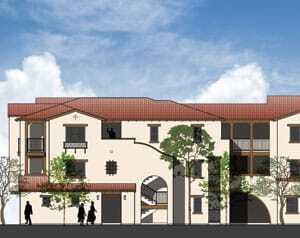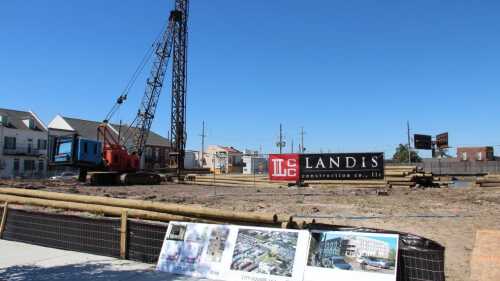Experts expect the recent recovery in demand for housing tax credits to in turn translate into a more robust pipeline of affordable housing construction.
Thanks in large part to federal economic stimulus money, America’s most productive affordable housing development program over the past quarter century did not come to a halt amid the depths of the current recession. But the near-collapse of the Low-Income Housing Tax Credit (LIHTC) market did sharply cut into affordable housing production—and right at the time when the recently unemployed, as well as others, were losing homes at an unprecedented rate.
On a brighter note, however, experts expect the recent recovery in demand for housing tax credits to in turn translate into a more robust pipeline of affordable housing construction. And it does not hurt that land, labor, materials, and capital costs are still for the most part well below where they were before the housing industry started falling apart about five years ago.
Demand for tax credits is exceeding the supply for the first time since the recession started digging in three years back, which bodes well for more affordable housing construction ahead, says LIHTC specialist Neil Socquet. He is optimistic enough about the market’s recovery to have just launched the LIHTC syndication firm IFG Capital in Los Angeles. “We will have more production, now that investor interest is strong again,” he says. Socquet expects more units to be built this year because affordable housing sponsors can now sell their allocated tax credits at prices that once again make economic sense for development projects. And there is plenty of catching up to do.
As the recession dug in, cash equity raised through LIHTCs—which finance development of apartments reserved for residents earning up to 60 percent of the area median income (AMI)—sank. Housing credit investments fell by nearly half in 2009 from their peak of about $9 billion in 2006; nearly 112,000 LIHTC-financed apartments were placed into service in 2007, according to U.S. Department of Housing and Urban Development (HUD) figures.
An annual average of more than 120,000 tax-credit units came on line from 2003 to 2007, but in the wake of the capital-raising calamity, developers launched construction of only about 43,000 tax-credit apartments in 2009—half the previous year’s starts—followed by a paltry 47,000 last year, reports economist Robert Denk at the National Association of Home Builders (NAHB) in Washington, D.C.
The decline can be blamed on puny profits. Because banks, in particular, and other investors had far less taxable income to shelter, if any, demand for the tax credits cratered—especially from giant LIHTC investors Fannie Mae and Freddie Mac, which had accounted for about 40 percent of the market.
“The problem was you just couldn’t get a deal to pencil then,” because investors were often willing to pay less than 70 cents for each tax-credit dollar, recalls Socquet. “Today we’re seeing deals that pencil very well.”
Still, it is going to take a while before the pipeline ramps up to historical levels. NAHB projects that developers will launch construction of about 55,000 affordable apartments financed through the LIHTC program this year, with a hefty bump to nearly 80,000 in 2012.
Meanwhile, more affordable apartment developments financed in part through tax-exempt bonds are also penciling out. Developers pursuing various models of workforce housing projects remain active, especially in higher-cost markets around the country.
One thing is certain: even though the recession eroded single-family home values that peaked in the middle of the past decade, it has not reduced the need for affordable apartments. Historically low levels of construction of both market-rate and subsidized rental units means rents are rising in many markets at a time when median renter incomes are falling.
While some observers contend that the abundance of foreclosed homes has helped fill the need for additional affordable housing, longtime LIHTC strategist Michael Novogradac strongly disagrees. “With unemployment so high and incomes down, there are a lot more people who need affordable housing,” says Novogradac, managing partner of specialty accounting and consulting firm Novogradac & Co. in San Francisco.
“Renter demand for affordable apartments is higher than ever,” says Socquet. Indeed, in markets where rents at tax-credit properties are notably lower than market rates, affordable apartments are likely to have long waiting lists, he says.
According to the U.S. Census Bureau’s latest annual American Community Survey, more than 18.5 million renters were spending 30 percent or more of their income on rent and utilities in 2009, an increase of more than 1 million from the previous year. Median rental rates nationwide increased nearly 3 percent during the year to $842, while the median renter income fell more than 4 percent to $30,576.
Robert Greer, president of affordable housing developer Michaels Development Co. in Marlton, New Jersey, noted during a recent NAHB-sponsored conference that his company’s properties are seeing an average of eight applications for every two-, three- or four-bedroom unit that becomes available. “The demand is simply growing beyond the ability of affordable housing developers” to meet it, he said.
Through the economy’s disruptive cyclical swings over the past decade, the LIHTC program has been accounting for about nine of ten new apartments completed that are affordable to moderate-income renters. After 2008’s 20-cent boost in the annual LIHTC allocation cap, that cap for each state stands at $2.10 per capita—with a minimum cap of $2.43 million for any state.
A pair of stimulus programs helped stem the LIHTC devaluation—and kept construction from falling even further—when investor demand hit a low point during the depths of the recession. HUD’s Tax Credit Assistance Program and the U.S. Treasury Department’s Section 1602 exchange program—both part of the American Recovery and Reinvestment Act (ARRA)—together “essentially bought up 50 percent of the credits that were out there,” Socquet notes.
Pricing support then continued as several profitable corporations—including Google, Waste Management Inc., Verizon, Goldman Sachs, Kroger Co., and Berkshire Hathaway—started joining existing and returning LIHTC equity investors over the past year or so. Insurance companies and other financial institutions have also become more active players.
LIHTC pricing recovery has been strongest— rising to as much as 90 cents or more on the tax-credit dollar—in major metropolitan areas where investor demand is particularly buoyant, Novogradac notes. In smaller markets and rural areas, pricing is more likely in the 80 percent range, or even the 70 percent range in some cases.
Another recession-related effort as part of the ARRA, the Treasury Department’s New Issue Bond Program, is helping more bond-financed affordable housing developments pencil out. The program, which supports issues of tax-exempt housing revenue bonds, helps keep project financing costs below market rates.
Strengthened demand from tax-motivated investors is also making affordable housing projects financed with tax-exempt bonds more viable, Socquet notes. “For the first time in quite a while, the 4 percent tax credits that come with [investments in] bond-financed projects are helping projects in California pencil with no additional soft subsidies,” he says.
For example Irvine, California–based Jamboree Housing Corp. in December broke ground on the 94-unit Bonterra apartments in Brea, California, which are financed in part through the sale of $7.7 million in tax-exempt bonds, along with various other mechanisms. Also, Los Angeles–based Meta Housing Corp. in January broke ground on a $42 million, 126-unit seniors’ housing project—which includes gallery and performance space—in North Hollywood’s Arts District. The project is being financed with $25.2 million in tax-exempt bonds, $2 million in tax credits, and $3.4 million in developer equity and deferred fees.
Widely varying public subsidies are also helping workforce housing developments spring up, in particular near employment centers of high-cost major metro areas. These products are operated under different definitions by various jurisdictions, but frequently entail for-sale housing made affordable to residents earning up to 80 percent of AMI.
Success in this sector usually involves subsidizing below-market-rate sales of restricted units with profits from high-demand market-rate units, says A.J. Jackson, vice president at Washington, D.C.–area specialty developer EYA. “We’re trying to make it affordable for families to live in specific locations that are closer to jobs and therefore help reduce traffic, redevelop [decaying] neighborhoods, and diversify socioeconomic demographics.”
It helps a lot that lower land costs, in particular, allow subsidized housing projects to make economic sense today—as do materials and labor costs that are lower amid still-tepid construction activity. Although framing lumber prices have risen somewhat in recent months, interest rates are low and construction costs are low, says Socquet. The Turner Building Cost Index, which factors in costs of labor and materials nationwide, has hovered around 800 for much of the past year after peaking well above 900 during the second half of 2008.
Looking forward, affordable housing would get a boost if Congress were ever to allocate funding to the National Housing Trust Fund and associated housing vouchers—established in 2008 but never funded. The National Low Income Housing Coalition continues to push Congress to allocate more than $1 billion to this cause, which is aimed at financing construction, rehabilitation, and preservation of affordable residences.
Now that Republicans have regained control of the House of Representatives, affordable housing advocates have to wonder whether the LIHTC program will survive the focus of the Tea Party on cutting federal taxes and spending.
Novogradac and Socquet for their part remain optimistic. Given that the LIHTC program is considered one of the great successes associated with the last major tax overhaul in 1986, “There’s no reason to think it wouldn’t survive more tax reform,” Novogradac says.
Socquet agrees, noting that demand for affordable housing is strong in good economic times and bad. “If the economy is doing extremely well, you have to have affordable housing because people are priced out of the market,” he says. “And if the economy is devastated, people who are out of work need affordable places to live.”






